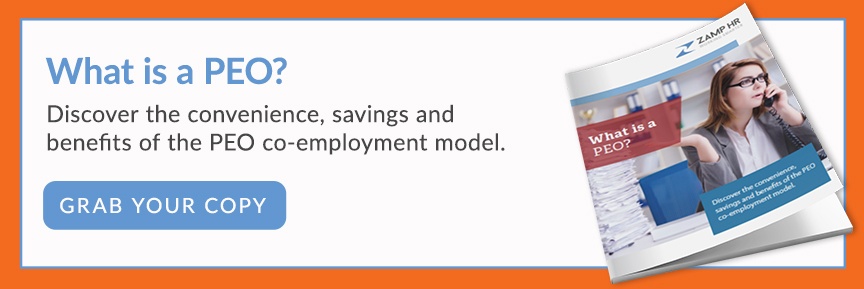Your career page is twice as effective as job boards for attracting new hires according to a study by Jobvite. Your careers page is not just a platform for listing job vacancies; it’s a window into the company.
A well-crafted career page is the company’s opportunity to showcase its uniqueness, highlight its exciting career opportunities, and give job seekers a real sense of what it’s like to work there.
But how can a company ensure that its career page is not just good, but great?
The below career page best practices can help your company stand out, attract the right talent, and provide a positive user experience.
These best practices are not just theoretical but practical, actionable steps you can start implementing today.
1. Consistent Employer Branding
Establishing a compelling employer brand is a cornerstone of effective recruitment marketing. It’s more than just a logo or color scheme; it reflects the company’s mission, values, and culture.
If you don’t already have an employer brand, start by defining what makes the company unique.
Is it an innovative spirit, a commitment to sustainability, or perhaps a culture of continuous learning? Once defined, these elements should be clearly communicated throughout the career page.
Consistency in messaging is equally crucial.

It’s not just about saying the same thing everywhere but about creating a unified image that resonates across all channels. This means using a consistent tone of voice, language, and visuals.
For instance, if a company prides itself on its friendly, team-oriented culture, this should be reflected in the language used in job postings, the images of team activities, and even in the tone of automated emails sent to applicants.
2. Easy Access
A career page should be easy to find and navigate. It should be prominently linked from the homepage, included in the website’s main navigation menu, and listed in its footer. The goal is to create a seamless journey for job seekers, from their initial visit to the submission of their application.
Similarly, mobile optimization is no longer optional; it’s a necessity. With many job seekers using their mobile devices to explore job opportunities, ensuring the career page is mobile-friendly is vital.
Accessibility also means making the career page inclusive. Adhere to web accessibility standards to ensure the page is accessible to all, including those with disabilities.
This could mean providing alternative text (alt text) for images, ensuring sufficient color contrast for those with visual impairments, and ensuring all functions can be performed using a keyboard for those who can’t use a mouse.
With a strong employer brand and an accessible career page, the foundation is set. The next step is to focus on the design elements that can make a career page stand out.
3. Attractive Design
An attractive design is more than just a pretty facade; it’s a strategic tool that can significantly enhance a job seeker’s experience.
Start by ensuring your career page aligns with your overall company branding - from color schemes and fonts to logos and other visual elements.
Next, consider the layout. Organize information logically and intuitively. Break up text with headers and bullet points to improve readability. Use white space effectively to prevent the page from feeling cluttered.
Page load speed is another crucial factor. A slow-loading page can deter potential candidates, so optimize images and other elements to ensure they load quickly.
Also, ensure your design is responsive so it looks good on any device, whether it’s a desktop, tablet, or smartphone.
4. Multimedia Use
Multimedia can significantly enhance the engagement factor of your career page. Start by incorporating images that reflect your company culture. This could include photos of your team, your workspace, or company events.
Videos are another effective multimedia tool. Consider creating a ‘day in the life’ video that gives job seekers a glimpse into what it’s like to work at your company. Employee testimonials can also be presented in video format for a more personal touch.
Infographics can be used to visually represent information about your company, such as growth statistics, diversity data, or benefits offered. They’re a great way to convey information in an easily digestible format.
5. Clear and Concise Job Descriptions
A job description is more than a list of duties; it’s the first chapter of your company’s story that a potential candidate reads.
Clear and concise job descriptions, a key component of effective talent acquisition strategies, can create a fruitful relationship between an employer and a potential employee.
They provide a snapshot of the role, responsibilities, and qualifications, offering a glimpse into the day-to-day life of a job at your company.
But the power of a job description doesn’t stop at the facts. It’s also a platform to showcase your company’s unique employee value proposition.
However, “clear and concise” does NOT mean “boring.”
6. Creative Job Postings
Creative job postings can turn a standard job ad into an engaging narrative. This is where your company’s personality shines, highlighting the unique aspects of each role and making it irresistible to the right candidate.
However, creativity should never cloud clarity. It’s crucial to strike a balance, ensuring that the charm of a creative job posting doesn’t overshadow the essential details of the job.
In this way, you can mix conciseness with creativity to attract and engage while increasing discoverability on the internet.
7. Up-to-Date Job Postings and Regular Updates
Keeping job postings up-to-date is a crucial aspect of career page best practices. It’s about ensuring that potential candidates can access the most current opportunities within your organization.
Regular page updates not only provide a positive user experience but also reflect the dynamism and growth of your company.
Remember, an outdated job posting can lead to frustration and may deter high-quality candidates from applying. So, make it a priority to refresh job postings, remove filled positions, and keep the career page vibrant with the latest company news and updates.

8. Simplified Application Process
Moving on to the application process, simplicity is critical.
The goal is to create a smooth, straightforward journey for job seekers from the job advertisement to the application submission. A complicated or lengthy application can deter even the most enthusiastic candidates.
So, streamline the process.
Ask only for essential information initially, make it easy for candidates to upload their resumes, and ensure the process is mobile-optimized.
A simplified application process is not just about user-friendliness; it’s a vital part of your recruitment marketing strategy that can significantly enhance the candidate experience.
But what about your offerings? If you want to be competitive, you’ll need to offer benefits or at least perks.
9. Benefits and Perks
Today’s job seekers are looking beyond the paycheck, focusing on the total compensation package, which includes benefits and perks. A well-rounded benefits package can significantly enhance your employer value proposition, making your company a more attractive place to work.
Group health insurance is often at the top of the list for many job seekers. Highlighting this offering on your career page is essential.
But don’t stop there.
Showcase your company's full range of benefits, such as retirement plans, life insurance, and disability coverage.
Perks, those extras that sweeten the deal, also play a significant role in attracting and retaining employees. These could range from flexible work hours and remote work options to wellness programs, tuition reimbursement, and even fun office amenities.
By clearly communicating the benefits and perks you offer, you’re not just listing what you provide but also showing potential employees that you value their well-being and work-life balance.
10. Career Growth Opportunities
When attracting ambitious candidates, illustrating a clear path for career development is crucial. It’s not enough to simply state that opportunities exist; show them.
Consider featuring a ‘growth and development’ section on your career page. You can highlight programs like internal mentorships, leadership training, or tuition reimbursement here.
Showcase success stories of employees who’ve advanced within the company. Use visuals like career path diagrams or video interviews with employees discussing their growth in the company. This tangible demonstration of career progression can be a powerful motivator for potential applicants.
11. Diversity and Inclusion Statement
A new LinkedIn study found that 87 percent of Americans say working for a company that demonstrates a commitment to the culture and values they believe in is essential.
But stating that your company values diversity and inclusion isn’t enough; you must show it.
Consider dedicating a section of your career page to your diversity and inclusion initiatives. Highlight specific programs, partnerships, or employee resource groups that foster an inclusive environment. Include statistics that demonstrate your diverse workforce. If possible, feature testimonials from employees who can speak to your inclusive culture.
12. Employee Testimonials
Employee testimonials aren’t just for demonstrating diversity and inclusivity. These firsthand accounts serve as credible endorsements of your company, offering potential candidates a glimpse into the real experiences of people within your organization. They humanize your brand and can significantly enhance your employer branding efforts.
Consider featuring these testimonials prominently on your career page. They could be in written form, but video testimonials can be particularly impactful. They provide a dynamic and engaging way to share your employees’ stories and experiences.
Remember, authenticity is critical. Encourage employees to speak freely about their experiences, the company culture, and the career development opportunities they’ve encountered.
13. Social Media Integration
Social media integration can significantly expand the reach of your job postings and enhance your talent acquisition strategies.
Make it easy for your existing employees and job seekers to share your job postings on their social media platforms. This increases the visibility of your job advertisements and leverages the networks of your potential candidates.
It’s a simple yet effective way to reach a larger pool of potential applicants, including passive job candidates who might not be actively looking for a new role but could be enticed by an opportunity shared by a friend or colleague.
With social media integration in place, the next step is to ensure that your career page is not just a static entity but a dynamic platform that evolves with your company and the needs of your potential candidates
14. Optimizing Your Career Page
Optimizing a career page isn’t just about aesthetics or user experience; it’s also about visibility.
In the vast digital landscape, a career page can easily get lost without proper optimization. SEO, or search engine optimization, is crucial to career page best practices. It’s about making your career page discoverable to job seekers where they’re most likely to be looking - search engines.
Start by identifying relevant keywords that job seekers might use when looking for opportunities in your industry. Incorporate these keywords into job descriptions, meta tags, and even image descriptions. But it’s not just about stuffing the page with keywords. They need to be used naturally and contextually. This is a crucial part of effective job posting optimization.

For instance, if you’re a tech company looking for software engineers, keywords could include specific programming languages, methodologies, or even the benefits that are most appealing to software engineers, such as remote work or continuous learning opportunities.
Next, consider the structure of your URLs. They should be simple, readable, and descriptive. For example, instead of a URL like “www.yourcompany.com/jobs/12345”, use something like “www.yourcompany.com/jobs/software-engineer.” This not only improves SEO but also enhances the user experience.
Also, don’t forget about the power of internal and external links. Linking to relevant content within your site and to reputable external sites can boost your visibility. For example, you could link to a blog post about a day in the life of a software engineer at your company, or to industry research related to your field.
By implementing these SEO optimization strategies, your career page can rise above the digital noise and reach the eyes of the right job seekers.
But discoverability goes beyond your website. There’s also job aggregation boards.
15. Automatic Job Board Listings
Two platforms that can significantly increase your job postings’ visibility are LinkedIn and Google for Jobs. To make the most of these platforms, you’ll need to leverage structured data, also known as schema, and other optimization techniques.
Structured data is a standardized format for providing information about a page and classifying the page content. When it comes to job postings, using JobPosting schema can help search engines like Google understand the job details, such as the title, hiring organization, job location, and salary. This can enhance the appearance of your job postings in search results and make them eligible for special features in Google for Jobs.
To implement JobPosting schema, you’ll need to add specific properties to the HTML of your job listing pages. These properties include “title” for the job title, “hiringOrganization” for the company name, “jobLocation” for the location, and “baseSalary” for the salary, among others.
For LinkedIn, you’ll want to ensure your job postings are optimized for their Limited Listings feature. This feature automatically pulls job listings from your career page onto LinkedIn.
To make sure your postings are picked up, you’ll need to follow LinkedIn’s job posting best practices. These include having a dedicated URL for each job posting, including the job title and job description in HTML (not in an image or PDF), and avoiding the use of special characters in the URL.
By leveraging structured data and following these optimization techniques, your job postings can gain increased visibility on LinkedIn and Google for Jobs, helping you attract the right talent. But remember, visibility is just one aspect of a successful career page.
In the next section, we’ll explore the importance of an FAQ section, clear contact information, and accessibility for all users.
16. FAQ Page
An effective FAQ section is a cornerstone of career page best practices. It serves as a platform to address common inquiries, clarify the application process, and spotlight the unique aspects of your company culture. It’s not just about answering questions; it’s about crafting a candidate experience that’s as enlightening as it is engaging.
Consider the potential questions that job seekers might have. These could range from specifics about the application process to broader inquiries about company values and culture.
The goal is to anticipate the information job seekers might need and provide clear, concise answers.
By addressing common questions and concerns upfront, you can help potential candidates feel more informed and confident in their decision to apply.
Following Career Page Best Practices
By implementing these best practices, employers can transform their career page into a powerful recruitment marketing tool. From showcasing the company culture and employee value proposition to optimizing job postings and integrating with social media, every element plays a crucial role in attracting and retaining talent.
Always remember that a career page is more than a list of job vacancies. It reflects the company’s brand, is a testament to its culture, and is a beacon for attracting top talent.
By following these best practices, you can create a career page that attracts potential candidates and provides them with a positive, informative, and engaging experience.



